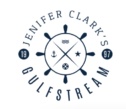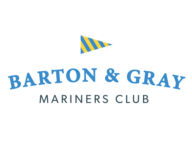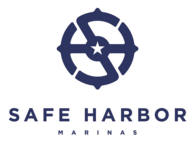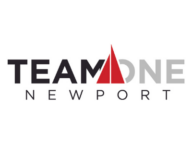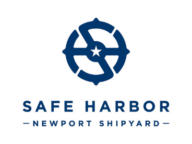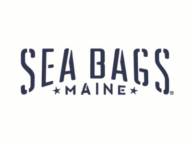Gulf Stream & WX
Weather and Gulfstream Resources
For more than 40 years, Frank Bohlen has studied ocean and nearshore currents and transport. Since 2002 he has prepared detailed analyses of the ocean between Newport and Bermuda in the months prior to this race.
Racing success as well as an enjoyable and safe passage to and from Bermuda requires care in preparation. To assist in this process the Bermuda Race Organizing Committee provides a variety of resources including the Ambassadors and Inspectors directed particularly at boat, crew and logistics issues.
Of course, of equal, if not more, importance is the range of weather, current and sea state conditions that might be encountered during the passage. Too often skippers and navigators fail to give these critical factors the personal attention they deserve relying instead solely on professional services to provide a basis for optimum routing. Experience indicates however, that the value of professional services would increase significantly if clients had been better prepared to evaluate the information provided. Such preparation would also reduce the potential for “surprises” during the passage at which time the professionals are not available for consultation.
To assist in the analysis of probable weather and Gulf Stream conditions that will be encountered during the race to Bermuda and the return trip home I have compiled a list of what I consider to be websites of particular value considering both content and the possibility that the data provided could be compressed for easy download offshore via a satellite phone. Some number of the sites include explanatory material or tutorials that should not be overlooked. In the case of weather, analyses might be advanced by participation in a short course or webinar available from a number of sources.
For the Gulf Stream, I will again be preparing a number of tutorials (archives since 2002 below) dealing with the structure and location of the Gulf Stream during the time preceding the start. Typically these extend over a one to two month period depending on the extent of the cloud cover and the complexity of the Stream. For both weather and Gulf Stream it is advisable to start analyses at least one and preferably two months prior to the start so as to have sufficient time to look over conditions encountered in previous races and to avoid the difficulties that are sure to arise if one begins study a week before the start! I hope that you will find this range of information useful and invite you to add your own preferences. Please don’t hesitate to contact me if there are any questions.
Enjoy !
Frank
Weather Service Race Support
Thanks to Commanders’ Weather for their in-kind donation of specialized weather forecasts for the Race Committee for the 2024 race.
Thanks also to Jenifer Clark’s Gulfstream for providing Gulf Stream charts to the fleet for the return from Bermuda after the race.
Frank Bohlen has been observing and studying the waters between New England and Bermuda for decades, with a particular focus during Bermuda Race Years.
Updated April 2023:
More Resources
(Last Updated April 24, 2024)
The National Weather Service site and the Ocean Prediction Center site both with an abundance of products including marine forecasts and satellite imagery. Valuable resources for the study of weather. Look particularly at the NWS Ocean Prediction Center and their Probabilistic Guidance. These sites must be studied!
The National Weather Service’s Environmental Modeling Center and home to the Global Real Time Ocean Forecast System model (RTOFS). This site is no longer maintained but contains some useful information on model characteristics. Global RTOFS High Resolution Oceanic Model (weather.gov) . provides up-to-date model results. Since many use this model in routing it’s useful to compare model results to direct satellite observations to develop confidence in model simulations. This model provides 1/12 degree resolution and is the result of collaboration between NOAA and the U.S. Navy Research Laboratory and others. Also see: https://ocean.weather.gov/Loops/ocean_guidance.php?model=NCOM&area=Useast&plot=current&day=1& loop=0
A site maintained by Rutgers University which includes a variety of satellite data some specific to the Gulf Stream. Also see the coastal current data provided by CODAR . These latter data will be of value to those transiting the Jersey shoreline. Similar data are available at LISICOS.uconn.edu for the area off Montauk Point. Entry to the site may be confusing at first. From the main menu select Data to find Satellites and then Satellite Data and select the region of interest. The products now are all are derived from the GOES 16 satellite providing lower Stream detail than available at this site in the past when NOAA 18 was used.
This product from the Ocean Prediction Center showing average sea surface temperatures over 4 days is a good way to monitor Gulf Stream evolution. Another site using GOES 16 images.
The home of the Mercator-Ocean International (MOI) Daily Global Physical Bulletin. This provides the results of their 1/12o(horizontal resolution) model detailing a number of parameters including sea surface temperature and currents. Comparisons of this model with observations and both the NOAA altimetry based model and the NOAA GROFS results show it to be very accurate. See Animations for an excellent way to evaluate the rate of temporal changes.
This is a dynamic link that can be used to obtain a plot of the surface currents at selected location as specified using the highlighted Lat and Lon coordinates and the appropriate year, month and day. These data are the result of using satellite altimetry observations to model currents. (Requires JAVA on your computer). Although application requires care these model results allow analysis of Gulf Stream conditions when cloud cover limits direct observation of SST. These model data also provide the best indication of conditions in the Sargasso Sea from the Stream to Bermuda. This model result and those above (GRTOFS etc) require study to assess navigational utility. Comparison with surface thermal data (e.g. Rutgers above) and any direct observations of surface currents is recommended. This link and the utility of the numerous parameters (e.g. contour, currents, velfield, bathy etc.) warrants careful study.
Bermuda Weather’s site. Provides continuing weather analyses and forecasts for the immediate vicinity of the island. It’s often interesting to compare these observations to conditions indicated by the larger area weather maps such as the NWS weatherfax charts of the northwest Atlantic. Also, see Yacht Charts under Marine Forecast as well as tidal data for Bermuda.
The source for Canadian weather and sea state analyses and forecasts.
This data allows direct confirmation of wind speeds and directions provided by the Surface Analyses from the National Weather Service and the variety of GRIB model data. The scatterometer data are often particularly useful near the Gulf Stream. This system represents the alternative to our QuikScat which is no longer operational.
A listing of tidal elevations and tidal currents at a number of stations throughout the U.S. Particularly useful for coastal and nearshore passages
For those wishing to look at the conditions during previous races this provides an archive of the NWS data back to the 1950s.
Home of the Euro model. Comparisons of the forecast provided by this model to those provided by the U.S. GFS model in combination with observed conditions can increase confidence in model products.
Gulf Stream Analysis Archives
SPONSORS
SUPPORTERS


